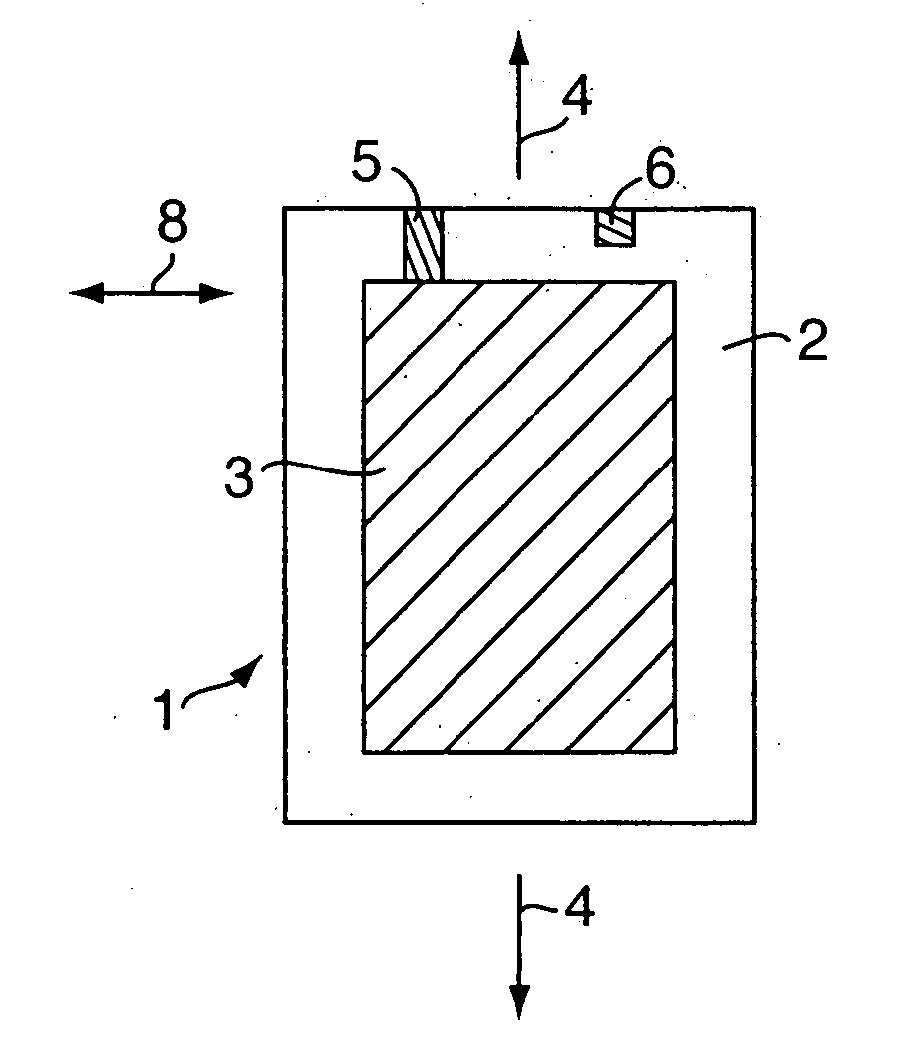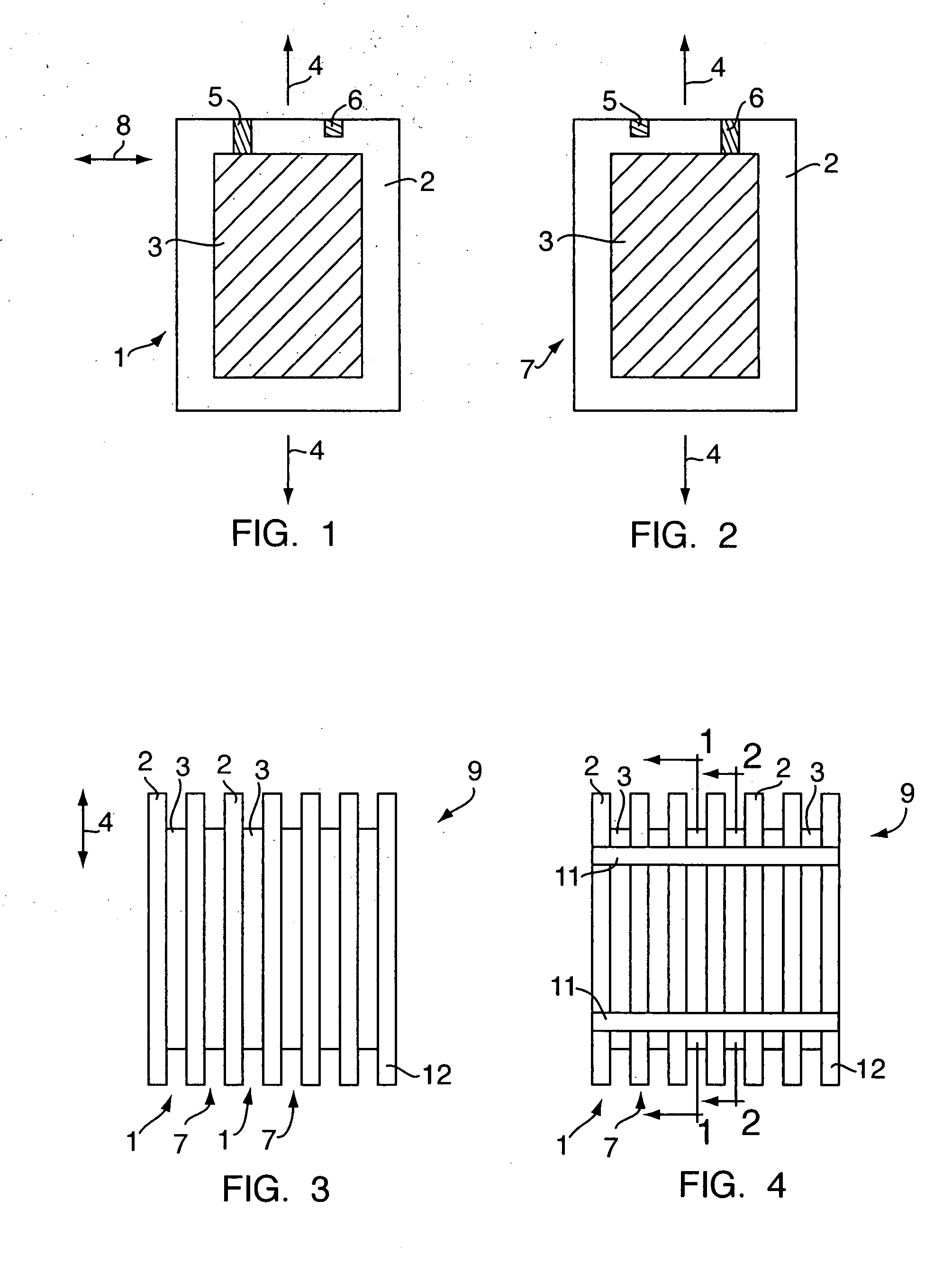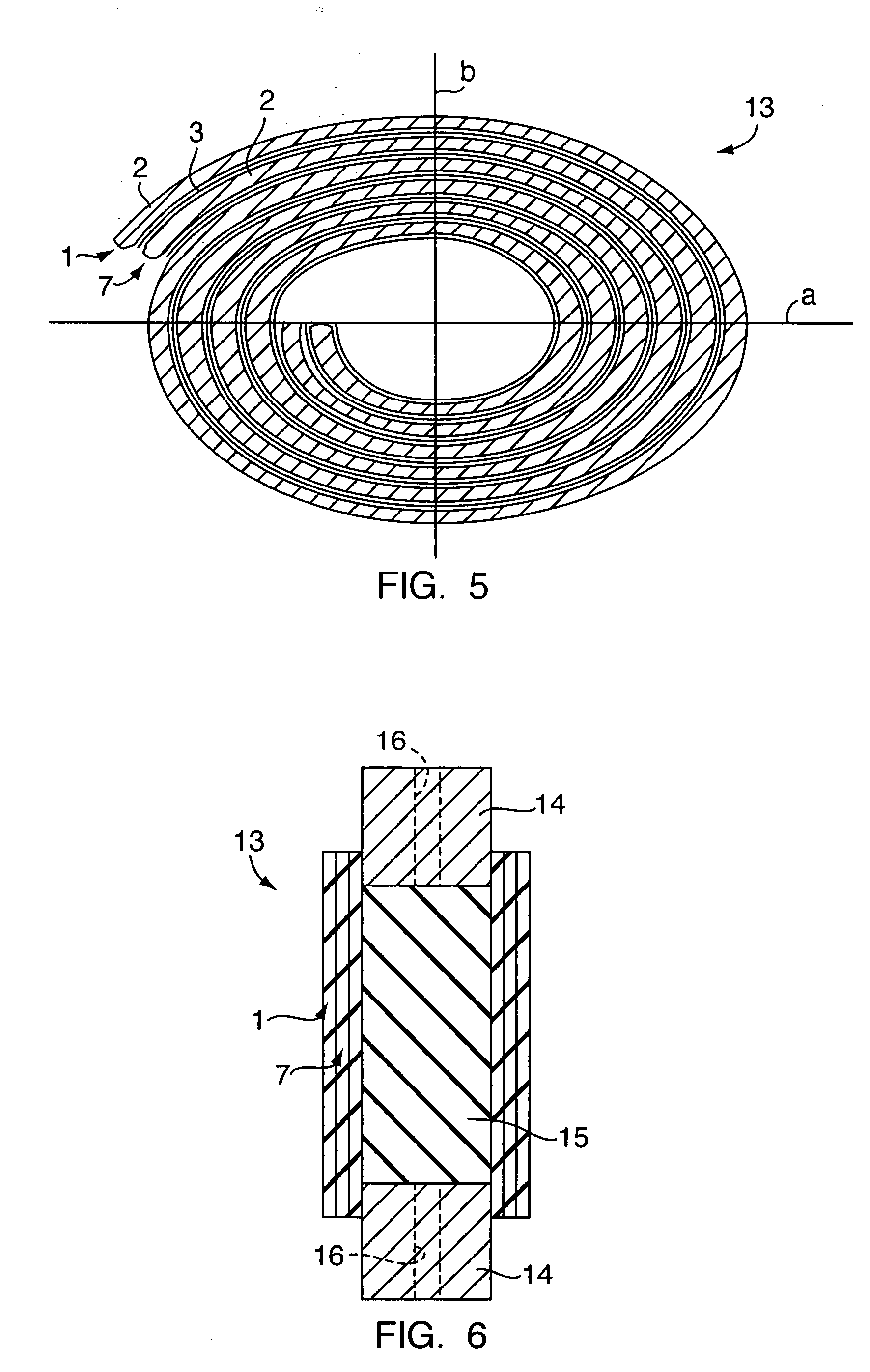Elastomer actuator and a method of making an actuator
a technology of actuators and elastomers, applied in the field of actuators, can solve the problems of reducing performance, reducing the performance, and changing the distance between the electrodes, and achieve the effect of improving performan
- Summary
- Abstract
- Description
- Claims
- Application Information
AI Technical Summary
Benefits of technology
Problems solved by technology
Method used
Image
Examples
Embodiment Construction
[0032]FIG. 1 shows a plate shaped element 1 for a laminated stack forming a sheet for an actuator. The element comprises a body 2 of an elastomeric material. The body 2 has a corrugated surface having a corrugated profile on one of its two surfaces, and an electrode 3 deposited on a large part of the corrugated surface. The electrode is deposited onto the surface of the body in a thickness of a few hundreds of Angstroms e.g. by vapour deposition of conductive particles onto the surface. The electrode could be made from gold, silver, or copper or from any other conductive material.
[0033] The corrugations of the body 2 are not shown in FIG. 1 but they should be understood to be corrugations, e.g. with a quasi-sinusoidal or a curved cross-sectional shape e.g. with a corrugation height from the top of a corrugation to the bottom of the corrugation in the order of ⅓-⅕ of the total thickness of the elastomer body. As an example, the corrugation height of a body having a total thickness o...
PUM
| Property | Measurement | Unit |
|---|---|---|
| size | aaaaa | aaaaa |
| thickness | aaaaa | aaaaa |
| thickness | aaaaa | aaaaa |
Abstract
Description
Claims
Application Information
 Login to View More
Login to View More - R&D
- Intellectual Property
- Life Sciences
- Materials
- Tech Scout
- Unparalleled Data Quality
- Higher Quality Content
- 60% Fewer Hallucinations
Browse by: Latest US Patents, China's latest patents, Technical Efficacy Thesaurus, Application Domain, Technology Topic, Popular Technical Reports.
© 2025 PatSnap. All rights reserved.Legal|Privacy policy|Modern Slavery Act Transparency Statement|Sitemap|About US| Contact US: help@patsnap.com



